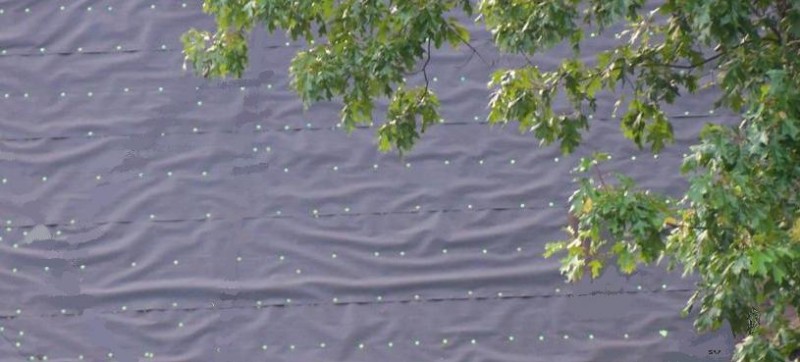Wet Felt Paper, Can I Roof Over It?

Is it ok to shingle over wet felt? What should I do?
Now that we are well into fall and the rainy days are here, I get asked this question many times about wet or damp felt. Is it ok to shingle over wet felt?
The felt as you know is designed as a last stand against water intrusion on to the roof sheathing and into the home. Roofing felt or tar paper can be left out in the weather for weeks shedding rainwater while the roof is in progress of being completed. The best roofing conditions are of course nice sunny days about 78- 85 degrees but this is not reasonable all year in the vast climates we have in America or with some of our readers all over the world.
The roofing products used on a steep slope roof { 4:12 or greater } move the moisture downwards to the eaves and off the roof. Both the felt and shingles are designed to be in the wet and rainy conditions. It is a good idea to blow off excess water with a leaf blower in the area you are starting roof and as the day progresses the rest of the felt should dry out. Moisture should evaporate between the shingles and the felt and not cause any issues or damage any of the roofing products.
 My concern with wet or damp felt is that it causes the felt to wrinkle. These wrinkles can hold up the shingles from laying flat till the moisture evaporates. This can be unsightly and disturbing to the homeowner. In some cases, I have seen the roofer slice these wrinkles and not repair the felt properly.
My concern with wet or damp felt is that it causes the felt to wrinkle. These wrinkles can hold up the shingles from laying flat till the moisture evaporates. This can be unsightly and disturbing to the homeowner. In some cases, I have seen the roofer slice these wrinkles and not repair the felt properly.
So what can you do? Most roofers will use the thicker #30 felts in colder and wet months because they do not wrinkle as much. The new synthetic underlayments are great for not wrinkling but cost a little more. Some roofers try not to tear off more than they can roof in one day to avoid this damp felt. It is also a good idea to cover the felt with a tarp in the area where you are going to first start working in the morning. Again applying the shingles to the damp surface should be ok. Be advised to check with the manufacturer you are using for the best results. One thing to remember low slope roofing { 2:12 or less } is totally different. Never work with low slope roofing products when you have damp underlayment or damp wood sheathing is seen. This will trap the moisture and cause blisters when it warms up.
Disclaimer: The information provided on AskARoofer.com is the opinion of the writers. It is the responsibility of the reader to check for accuracy in one's own jurisdiction, as there are different codes and restrictions for different parts of the country. AskARoofer.com does not accept any liability for the use of information on this website. AskARoofer.com has no controls over product failures, installation, or climate conditions that may change the roofing process in your area. Our information is in general to our area and cannot be the same as your local town or state. It is advised to seek the local Building Department, Licensed Contractor and local Product Representative for proper installation requirements and code enforcement when installing a new roof.
Have a question? AskARoofer.
Find your local roofing contractor in the RoofersCoffeeShop® Contractor Directory.









Comments
Leave a Reply
Have an account? Login to leave a comment!
Sign In